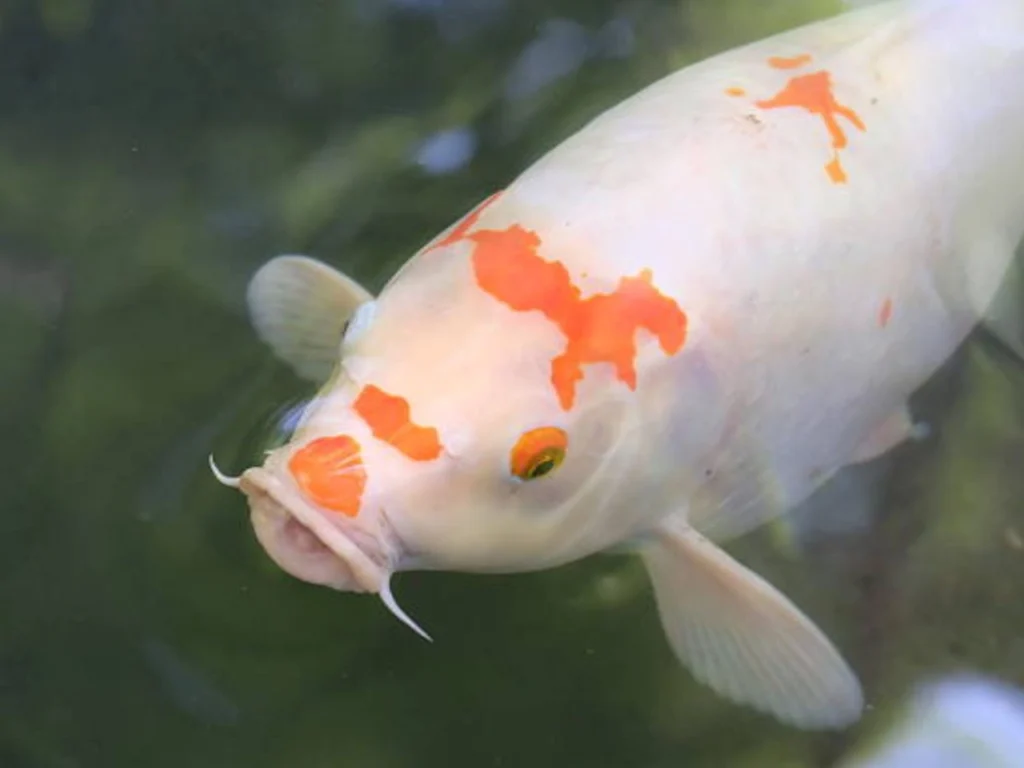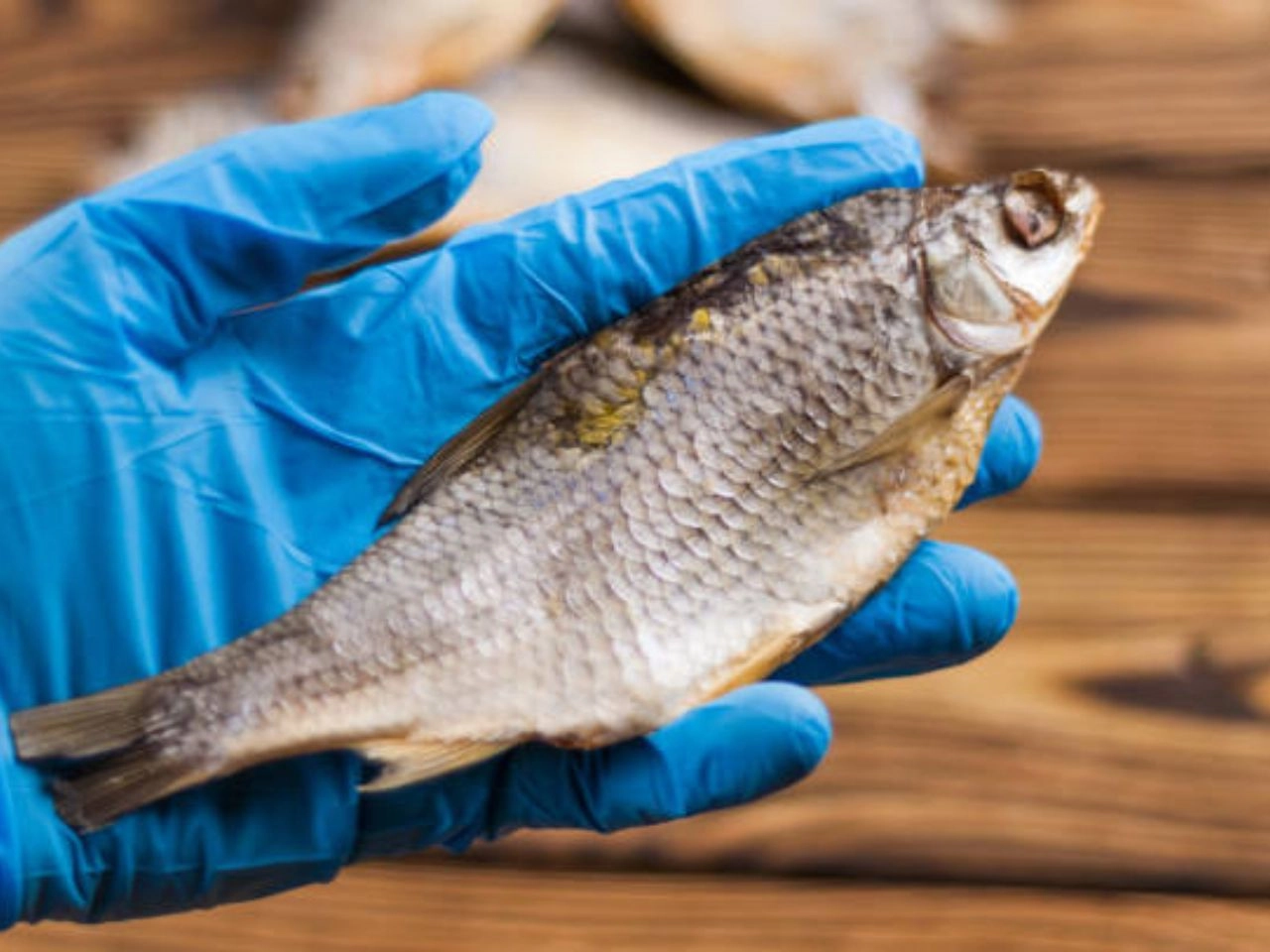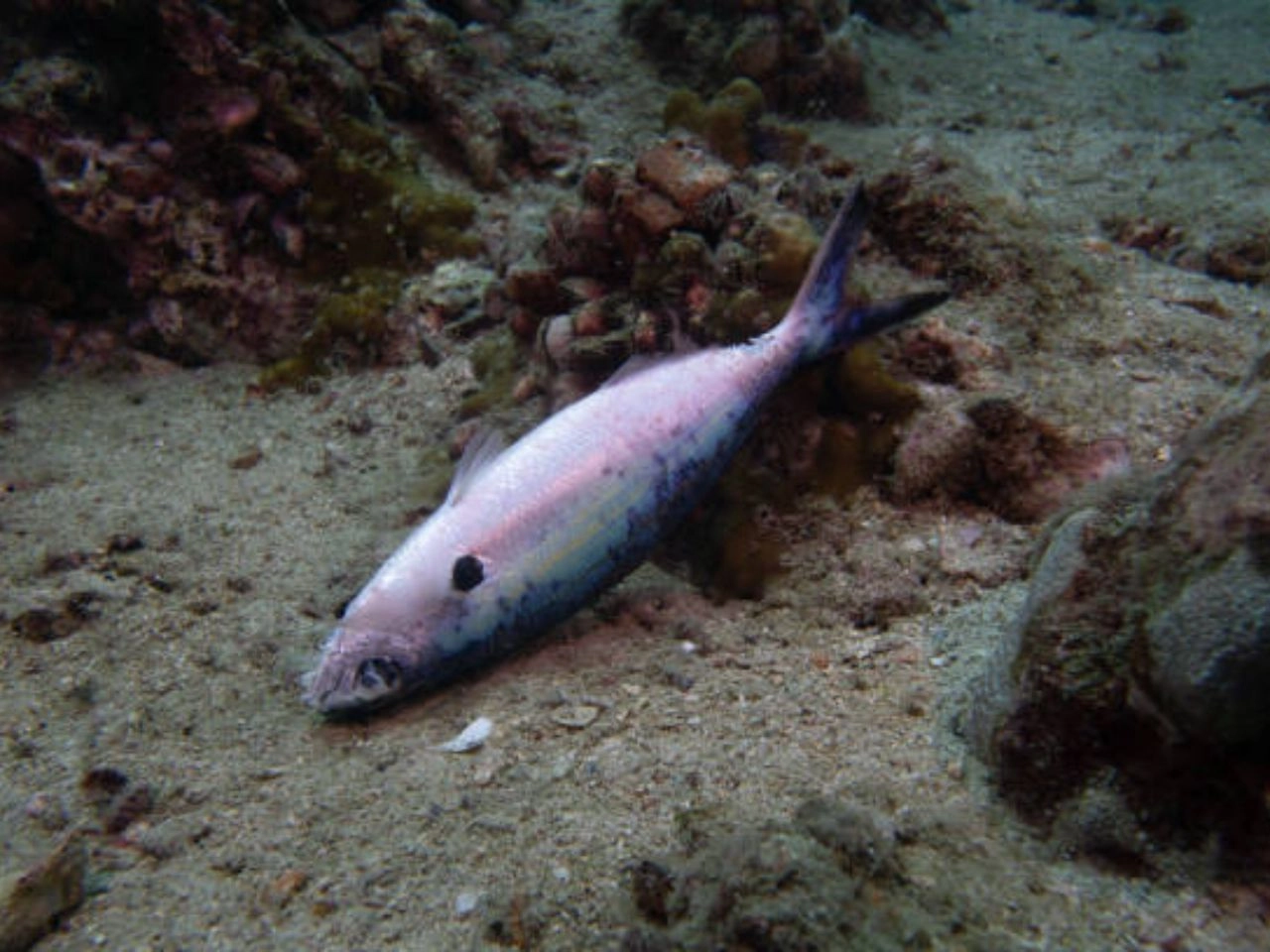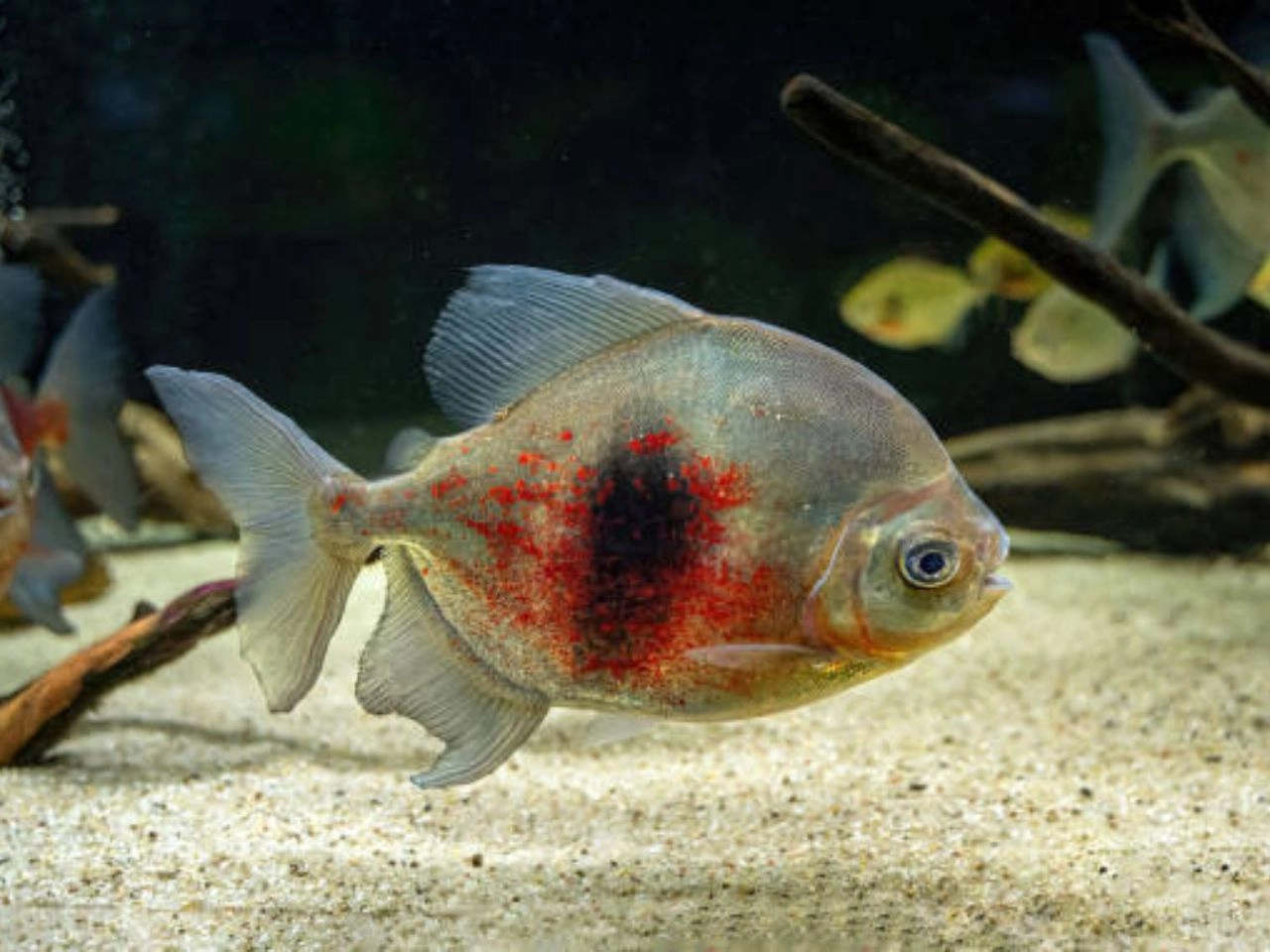Koi Fish Fin Rot is a bacterial infection that causes the deterioration of a fish’s fins. It requires prompt treatment to prevent severe damage.
Koi fish are cherished for their vibrant colors and serene presence in ponds. Unfortunately, fin rot can mar their beauty and health. This bacterial infection attacks the fins and tail, leading to fraying, discoloration, and tissue damage. Poor water quality, overcrowding, and stress are common culprits.
Early detection and treatment are crucial to saving your fish. Regular water changes, proper filtration, and reducing stress factors can help prevent fin rot. Consulting a veterinarian for accurate diagnosis and antibiotics is essential. Maintaining a clean, balanced environment ensures your koi thrive and remain a stunning centerpiece in your pond.
How to Treat Fin Rot on Koi Fish
Koi fish are beautiful and bring joy to many pond owners. But they can suffer from a disease called fin rot. This disease can damage their fins and tail. Let’s learn more about this problem and how it affects koi fish.

The Beauty Of Koi Ponds
Koi ponds are a sight to behold. They add beauty to any garden. The water is clear, and the fish swim gracefully. Koi come in many colors, like red, white, and gold. Each koi fish has unique patterns. These patterns make them special. Koi ponds bring peace and calm to your home.
The Threat Of Fin Rot
Fin rot is a common issue for koi fish. It is caused by bacteria. These bacteria attack the fins and tail. The disease can spread quickly. If left untreated, fin rot can harm your fish. Signs of fin rot include:
- Frayed fins
- Discolored fins
- Fins with white edges
- Fins falling apart
To keep your koi healthy, it’s crucial to spot these signs early. Regular pond maintenance helps prevent fin rot. Clean water and a balanced diet are key. If you see signs of fin rot, act fast. Treatment can save your fish from severe damage.
| Cause | Prevention |
|---|---|
| Bacteria | Clean water |
| Poor diet | Balanced nutrition |
| Stress | Calm environment |
Identifying Fin Rot In Koi Fish
Fin rot is a common disease affecting koi fish. Early detection is crucial. Spotting the symptoms early can save your fish. In this section, we will discuss how to identify fin rot in koi fish.
Symptoms To Look For
Fin rot shows some clear signs. It’s important to watch for these symptoms:
- Frayed Fins: The edges of the fins look torn.
- Discoloration: Fins may turn white, brown, or black.
- Inflammation: The base of the fins may appear red and swollen.
- Loss of Tissue: Fins may look shorter or have missing parts.
- Behavior Changes: The fish may become less active.
Comparing Fin Rot With Other Conditions
It’s easy to confuse fin rot with other conditions. Here is a comparison to help you:
| Condition | Symptoms |
|---|---|
| Fin Rot | Frayed finsDiscolorationInflammation |
| Ich | White spots on the bodyFish rubbing against objects |
| Fungal Infections | Cotton-like growthsGray or white patches |
Causes Of Fin Rot
Fin rot in koi fish can be distressing. Understanding its causes is essential. This helps in prevention and treatment. Let’s dive into the main causes.
Bacterial Infections
Bacterial infections are a common cause of fin rot. Harmful bacteria invade the fish’s body. These bacteria can destroy the fins. Poor water quality often leads to bacterial growth. The most common bacteria include Aeromonas and Pseudomonas.
To prevent bacterial infections, maintain clean water. Regularly change the water in the tank. Keep the filtration system in top condition. Healthy koi fish are less likely to get infections.
Environmental Stress Factors
Environmental stress can weaken koi fish. Stress makes them more susceptible to fin rot. Common stress factors include:
- Poor water quality
- Overcrowded tanks
- Sudden temperature changes
- Improper diet
- Inadequate oxygen levels
To reduce stress, ensure optimal living conditions. Monitor water parameters regularly. Avoid sudden temperature changes. Provide a balanced diet and proper aeration.
| Stress Factor | Prevention Tip |
|---|---|
| Poor Water Quality | Change water regularly |
| Overcrowding | Maintain proper tank size |
| Temperature Changes | Gradually adjust temperature |
| Improper Diet | Feed balanced diet |
| Low Oxygen | Ensure proper aeration |
Home Remedies For Treating Fin Rot
Fin rot is a common disease in Koi fish. It can cause their fins to decay. Luckily, there are home remedies to help treat this. These remedies can be effective and easy to apply.
Salt Baths
Salt baths are a simple and effective home remedy. You will need non-iodized salt. Follow these steps:
- Prepare a separate container with water.
- Add 1 tablespoon of salt per gallon of water.
- Place the fish in the salt bath for 5-10 minutes.
- Repeat this daily for a week.
Ensure the fish is not in distress. If it shows stress, remove it immediately. Salt helps kill bacteria. It also promotes the healing of the fins.
Herbal Treatments
Herbal treatments can be gentle and effective. Use these common herbs:
- Tea Tree Oil
- Aloe Vera
Tea Tree Oil has antibacterial properties. Mix a few drops in the water. Aloe Vera helps with healing. Add a small amount to the fish tank.
These herbs can improve the fish’s health. They support the immune system. Always use fresh and natural herbs.
Medical Treatments For Fin Rot
Fin rot is a common disease in Koi fish. It affects their fins and can cause severe damage. Effective treatments can help your Koi recover. This section will focus on medical treatments available for fin rot.
Antibiotics And Their Use
Antibiotics are often used to treat fin rot. They help eliminate bacterial infections. You can find antibiotics in pet stores. Always follow the instructions on the package.
Here is a table of common antibiotics:
| Antibiotic | Dosage |
|---|---|
| Oxytetracycline | 50 mg/L |
| Kanamycin | 20 mg/L |
| Maracyn | 1 packet per 10 gallons |
When To Consult A Vet
Sometimes, fin rot needs professional help. Consult a vet in these cases:
- Severe fin damage
- Fins not healing after 1 week
- Fish showing signs of distress
A vet can provide stronger antibiotics. They can also check for other health issues. Early consultation can save your Koi’s life.
Water Quality And Fin Rot Prevention
Maintaining good water quality is crucial for preventing fin rot in koi fish. Poor water conditions can lead to stress and disease. By ensuring optimal water parameters and a regular maintenance schedule, you can keep your koi healthy and vibrant.
Importance Of Water Parameters
Water parameters play a vital role in koi fish health. Here are the key parameters to monitor:
- pH Level: Keep pH between 6.8 and 7.8.
- Ammonia: Ammonia levels should be zero.
- Nitrite: Nitrite levels should also be zero.
- Nitrate: Nitrate levels should be below 20 ppm.
- Temperature: Maintain temperature between 65°F and 75°F.
Regularly testing these parameters helps in the early detection of issues. Use a reliable test kit for accurate results.
Regular Maintenance Schedule
A regular maintenance schedule ensures water quality remains high. Follow these steps:
- Weekly Water Changes: Change 10-20% of the water weekly.
- Filter Cleaning: Clean filters every two weeks.
- Debris Removal: Remove uneaten food and debris daily.
- Monitor Fish Behavior: Observe fish daily for any signs of stress or illness.
- Check Equipment: Inspect and maintain equipment monthly.
Consistency in these tasks helps maintain a stable environment. Stability is key to preventing fin rot.
Nutrition And Its Role In Prevention
Proper nutrition plays a vital role in preventing koi fish fin rot. A balanced diet strengthens their immune system. It helps them fight off infections and diseases. Let’s dive into how optimizing their diet can make a difference.
Optimizing Koi Diet
Feeding your koi a balanced diet is crucial. Provide a mix of proteins, fats, and carbohydrates. Here is a simple table outlining key dietary components:
| Component | Source | Benefits |
|---|---|---|
| Protein | Fish meal, shrimp | Growth, tissue repair |
| Fats | Fish oil, krill | Energy, healthy skin |
| Carbohydrates | Wheat germ, corn | Energy, digestion |
Supplements To Boost Immunity
Supplements can significantly boost koi immunity. Consider adding these to their diet:
- Vitamin C: Enhances immune response.
- Probiotics: Improves gut health.
- Garlic: Natural antibacterial properties.
Always consult a vet before introducing new supplements. Consistent, balanced nutrition is key to healthy, vibrant koi.
The Role Of Pond Plants In Fin Rot Prevention
Pond plants play a crucial role in maintaining healthy koi fish. They help in preventing diseases like fin rot. Plants create a natural and balanced ecosystem. They also reduce stress for your koi fish. Healthy koi fish have a lesser chance of developing fin rot.
Natural Remediation
Pond plants act as a natural filter. They absorb harmful chemicals from the water. This keeps the water clean and clear. Clean water is essential for healthy koi fish. Plants also produce oxygen, which helps fish breathe better. Better oxygen levels mean healthier fish and fewer diseases.
Plants also provide shade. Shade helps in reducing water temperature. Cooler water is less likely to promote the growth of harmful bacteria. Harmful bacteria can cause fin rot in koi fish. Thus, plants help in multiple ways to prevent fin rot.
Best Plants For Koi Ponds
Some plants are better for koi ponds. Here are some of the best options:
- Water Lilies: They provide shade and keep the water cool.
- Hornwort: This plant helps in oxygenating the water.
- Water Hyacinth: It absorbs toxins and keeps the water clean.
- Anacharis: It offers a good hiding place for koi fish.
- Lotus: This plant provides excellent shade and beauty.
These plants not only beautify your pond but also help in keeping your koi fish healthy.
Table Of Plants And Their Benefits
| Plant | Benefit |
|---|---|
| Water Lilies | Provides shade |
| Hornwort | Oxygenates water |
| Water Hyacinth | Absorbs toxins |
| Anacharis | Offers hiding places |
| Lotus | Provides shade and beauty |
Quarantine Procedures For New Koi
When you bring new Koi fish home, quarantine procedures are essential. Quarantine keeps your main tank safe from diseases like fin rot. This process ensures your new Koi are healthy before joining others.
Setting Up A Quarantine Tank
A quarantine tank is crucial for new Koi. You will need a separate tank, filter, and heater. The tank should be at least 30 gallons. Fill the tank with dechlorinated water. Ensure the water temperature is between 68°F and 74°F.
| Item | Description |
|---|---|
| Tank | At least 30 gallons |
| Filter | Helps keep water clean |
| Heater | Keeps water between 68°F and 74°F |
| Dechlorinator | Removes chlorine from water |
Monitoring Health Before Introduction
Monitor your new Koi for at least two weeks. Check for signs of fin rot or other diseases. Look for torn, frayed, or discolored fins. Also, observe their behavior. Healthy Koi are active and eat well.
- Check fins for damage
- Observe eating habits
- Look for any unusual behavior
If your Koi show signs of disease, treat them before they join others. Use medications specifically for fin rot. Follow the instructions carefully. Regularly test the water quality. Good water quality helps prevent diseases.
After two weeks, if your Koi are healthy, you can introduce them to the main tank. Move them slowly to avoid stress. Monitor them closely for the first few days.
Common Myths About Fin Rot
Fin rot is a common disease in koi fish. Many myths surround its treatment and prevention. Believing these myths can harm your koi. Let’s clear up some of these misconceptions.
Misconceptions About Treatment
Many people think antibiotics cure fin rot. This is not always true. Antibiotics work only for bacterial infections. Fin rot can be fungal too. Using the wrong treatment can harm your fish.
Another myth is that salt baths alone can cure fin rot. While salt can help, it is not a complete solution. Proper diagnosis and treatment are essential. You need to address the underlying cause.
Some believe that changing water frequently will cure fin rot. Clean water helps, but it is not a cure. You must treat the disease directly.
Prevention Myths Debunked
Many think fin rot occurs only in dirty water. While poor water quality can cause fin rot, it is not the only factor. Stress, injuries, and poor diet also contribute.
Another myth is that koi in large ponds won’t get fin rot. Fin rot can affect koi in any size pond. Proper care is key to prevention.
Some believe that once koi get fin rot, they are always prone to it. This is not true. With proper care, koi can recover fully and stay healthy.
| Myth | Reality |
|---|---|
| Antibiotics always cure fin rot | Only if it’s bacterial |
| Salt baths alone can cure fin rot | Not a complete solution |
| Fin rot occurs only in dirty water | Other factors also contribute |
| Large ponds prevent fin rot | Size doesn’t matter |
| Koi always prone to fin rot | Can recover fully |
Long-term Health And Fin Rot Recovery
Koi fish fin rot can be a challenging problem. Proper care is essential for their recovery and long-term health. Consistent monitoring and support are key. This section will guide you on how to maintain your koi’s health post-recovery.
Monitoring For Recurrence
Regular check-ups help detect early signs of fin rot. Examine your koi’s fins weekly. Look for any discoloration or fraying. Use a clean tank to avoid infections.
- Check water quality frequently.
- Maintain optimal pH levels.
- Ensure proper filtration.
Keep a record of your observations. Compare weekly notes to spot any changes. Regular monitoring helps in quick action.
Supporting Koi Health Post-recovery
Strong health boosts immunity. Feed your koi a balanced diet. Include high-quality pellets and occasional treats. Avoid overfeeding to prevent water pollution.
| Food Type | Benefits |
|---|---|
| Pellets | Rich in nutrients |
| Fresh Vegetables | Boosts vitamins |
| Insects | Provides protein |
- Change 10% of the water weekly.
- Check filters monthly.
- Vacuum the tank bottom.
Stress-free koi are healthier. Provide hiding spots and avoid overcrowding. Maintain stable water temperatures.
FAQ(Koi Fish Fin Rot)
How Do You Treat Fin Rot On Koi Fish?
Treat fin rot on koi fish by improving water quality, maintaining proper filtration, and using antibacterial treatments. Quarantine affected fish, provide a nutritious diet, and consult a vet for severe cases.
Can A Fish Recover From Fin Rot?
Yes, a fish can recover from fin rot. Treatment involves clean water, proper diet, and medication. Early intervention is crucial.
What Happens If Fin Rot Goes Untreated?
Untreated fin rot worsens, causing severe damage to fins. Bacteria may spread, leading to infection and potential fish death.
What Causes Fin Rot In Pond Fish?
Fin rot in pond fish is caused by poor water quality, stress, and bacterial infections. Overcrowding and inadequate filtration contribute to this condition. Regular water changes and proper pond maintenance help prevent fin rot.
Preventing koi fish fin rot is essential for their health. Regular water changes and proper tank maintenance are key. Monitor your fish closely for early signs of disease. Quick action can save your koi from severe fin damage. Keep your koi happy and healthy with consistent care and attention.








